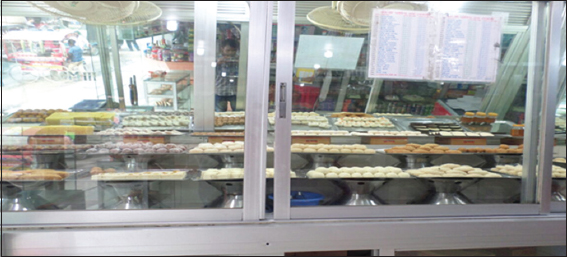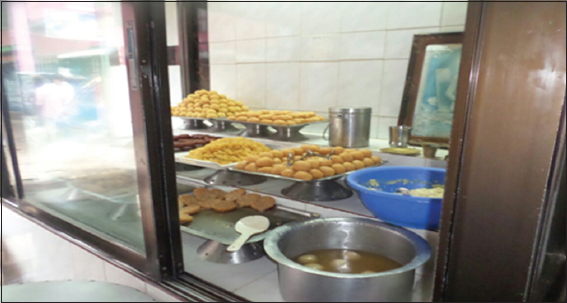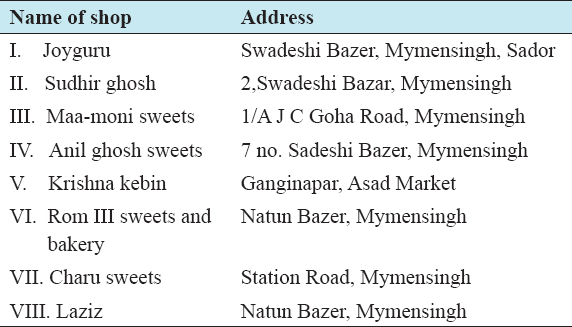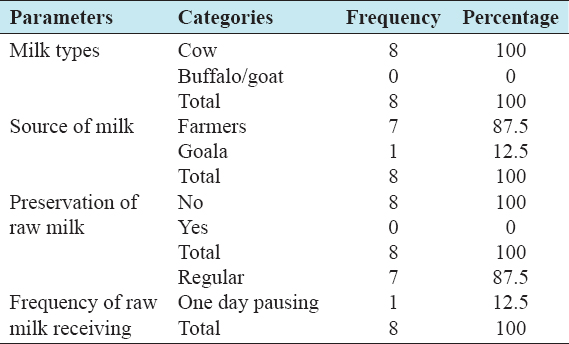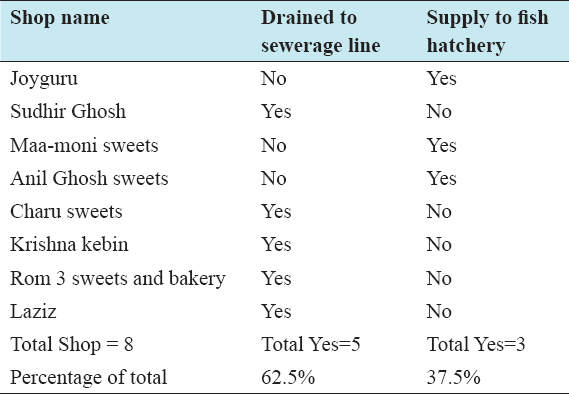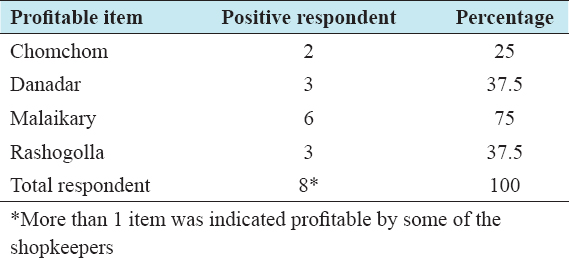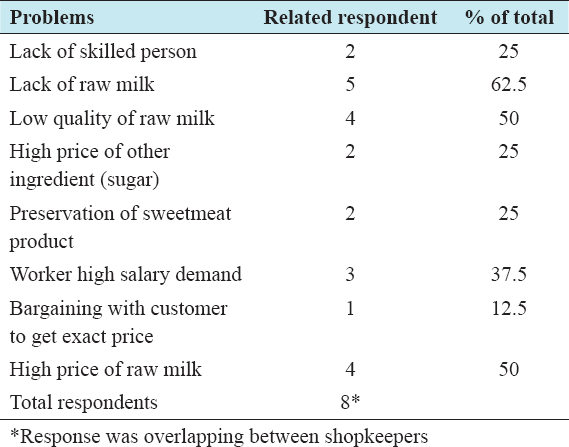Price variation and production-related aspects of sweetmeat shops at Mymensingh city in Bangladesh
Nawrin Jahan1, Md Ashraful Islam1*, Md Imran Omar2, Tanni Chanda1, Md Abdul Matin1
1Department of Dairy Science, Faculty of Animal Science and Veterinary Medicine, Patuakhali Science and Technology University, Barisal Campus, Barisal, Bangladesh; 2Agricultural Economics Division, Bangladesh Rice Research Institute, Joydevpur, Gazipur, Bangladesh
ABSTRACT
A survey was conducted based on structured questionnaire during the period of May–June 2016 at some selected sweetmeat shops in Mymensingh municipality to collect data regarding the location of sweetmeat shops, their product types, price variation, source of milk, waste disposal system, and related problems of the business. Survey data were analyzed critically and found that the shopkeepers of different sweetmeat shops received their raw milk from farmers (87.5%) and goalas (12.5%) for manufacturing of various dairy products. The mean prices/Kg (in BDT) of misty (rashogolla), malaikary, chomchom, danadar, kalojam, channar polau, amirty, sandesh, laddu, dahi(sweet), dahi(sour), rashomalai, low sugar dahi, rajvog, kadom vog, porabari chomchom, lalmohon, krishno kadom, dudh balusai, baby sweets, khir mohon, badami sandesh, sponge rashogolla, dudh peyara, kachagolla, maya sandesh, rom III monada, kacha sandesh, channar amirty, barfi, gurer sandesh, khir vog, and sada kalo misty were 158, 200, 170, 166, 173, 240, 170, 400, 130, 165, 97, 311, 167, 200, 200, 160, 170, 180, 150, 300, 350, 350, 280, 400, 400, 400, 500, 500, 170, 450, 450, 400, and 200, respectively. Among the selected shops, 62.5% dispose their waste through drain to the sewerage system and 37.7% sell to fish hatchery. In this study, several problems of sweetmeat producers were found. About 25% of producer had the problems such as lack of skilled worker, preservation problem, and high price ingredients; and 62.5% said lack of raw milk; 50% of the producers mentioned raw milk quality and high price of raw milk; 37.5% claimed worker’s high salary demand; and 12.5% of the producer had to bargain with customer to get exact price. Among the sweetmeat shops, most profitable item was malaikary for 75% of the shops, danadar and rashogolla for 37.5% shops, and chomchom for 25% shops. These information can provide valuable baseline for improving the overall condition of sweetmeat manufacturing and price variations between shops in the study area.
Keywords: Sweetmeat shop, price variation, waste disposal, production-related aspects

